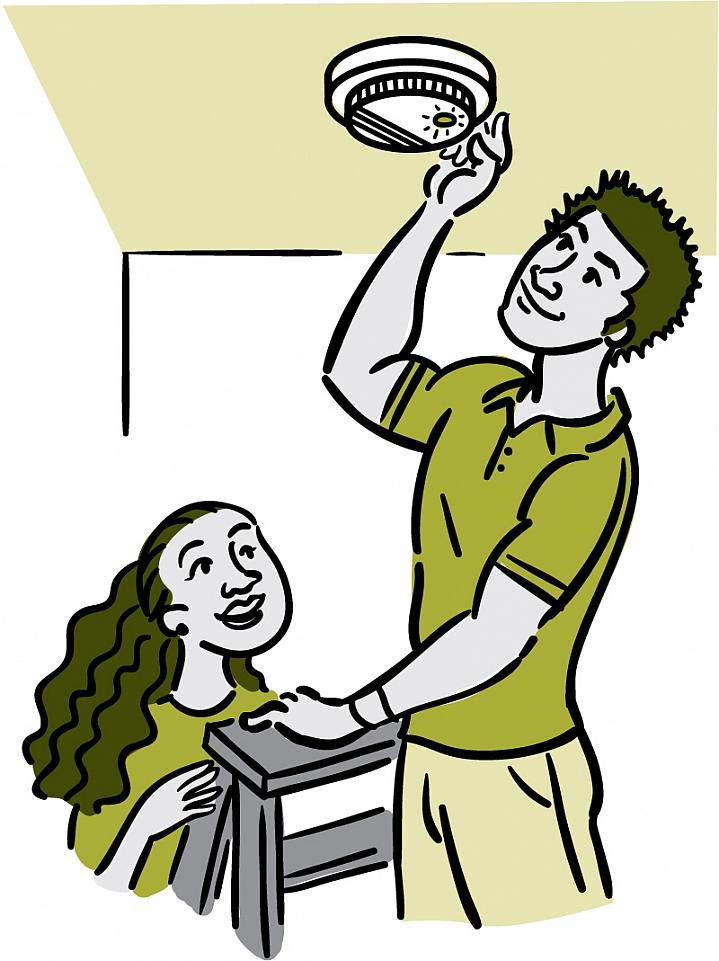A Burning Issue
Handling Household Burns

Accidental burns can happen just about anywhere in your home, and they’re not always caused by fire. You might get burned by spilling coffee in your lap, touching a hot iron, or misusing certain cleaning products.
Burns are skin or tissue damage, usually caused by heat. Burns can be caused by hot objects or liquid, fire, friction, the sun, electricity, or certain chemicals.
Each year, about a half-million people nationwide seek medical attention for burns. Household burns lead to nearly 7 of 10 admissions to burn centers. The good news is that the number of deaths from severe burns has dropped by more than half over the past 4 decades, in large part because of treatments developed through NIH-funded research.
The severity of a burn depends on the area it covers and how deep the damage goes. First-degree burns affect only the thin top layer of skin. Second-degree burns include the thick lower layer of skin. A third-degree burn is the most serious; it penetrates the entire thickness of the skin, permanently destroying it and the tissue that’s underneath.
You can care for most minor burns at home. If the burn is red and painful with mild swelling or little blistering, then it’s a first-degree or minor second-degree burn.
See a doctor if the burn is dark red and looks glossy with a lot of blistering. These are signs of a deep second-degree burn. Get immediate treatment if the burned skin is dry and leathery, perhaps with white, brown, or black patches. These are signs of third-degree burn.
Burns can become infected with bacteria or other germs if protective layers of skin are lost. Burns can also lead to painful inflammationSwelling and redness caused by the body’s protective response to injury., as your immune system shifts into gear.
“The immune system response is intended to limit the area of injury and to remove any bacteria,” says Dr. Ronald G. Tompkins, chief of the burn unit at Massachusetts General Hospital. “But sometimes this immune reaction can lead to further harm to the area damaged by the heat.” Proper burn care can help avoid additional damage.
Emergency treatment for third-degree and some second-degree burns may include a blood transfusion and/or extra fluids to help maintain blood pressure. Grafting—placing healthy skin on top of the burn wound—might help promote new skin growth.
Severe burns can lead to widespread inflammation, organ failure, and shockA life-threatening condition that occurs when the body doesn’t have enough blood flow.. This sometimes-deadly response can arise a week or two after the initial burn. But doctors can’t tell beforehand which patients might develop this extreme reaction. Tompkins and other NIH-funded scientists are looking for ways to predict and prevent shock and organ failure after burns or trauma.
You can take steps to avoid household burns. Never leave cooking food unattended on the stove. Set your water heater’s thermostat to 120 °F or lower to prevent scalding burns. And install smoke alarms on every floor of your home. Keep yourself and your family safe from unexpected burn injuries.
NIH Office of Communications and Public Liaison
Building 31, Room 5B52
Bethesda, MD 20892-2094
nihnewsinhealth@od.nih.gov
Tel: 301-451-8224
Editor: Harrison Wein, Ph.D.
Managing Editor: Tianna Hicklin, Ph.D.
Illustrator: Alan Defibaugh
Attention Editors: Reprint our articles and illustrations in your own publication. Our material is not copyrighted. Please acknowledge NIH News in Health as the source and send us a copy.
For more consumer health news and information, visit health.nih.gov.
For wellness toolkits, visit www.nih.gov/wellnesstoolkits.